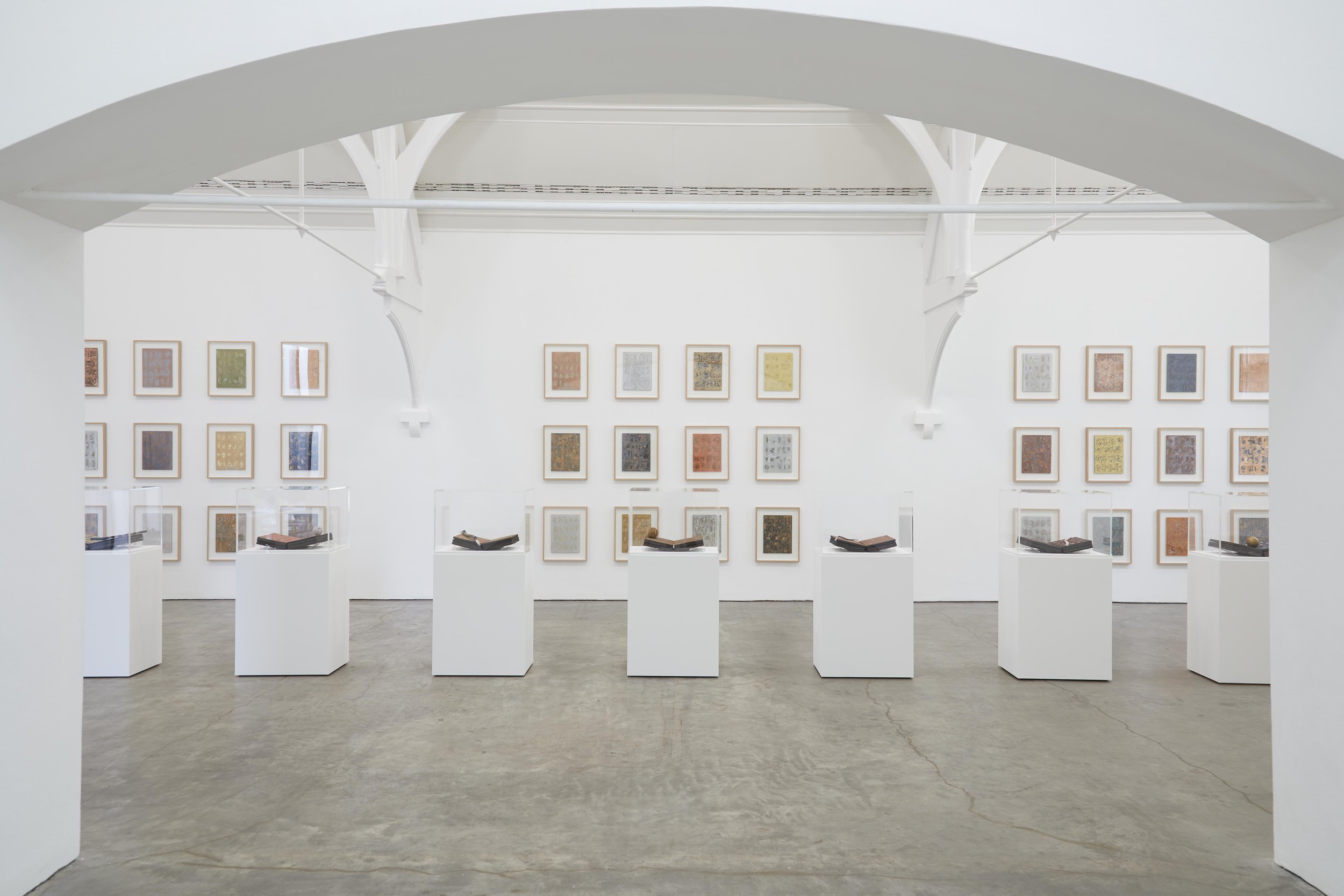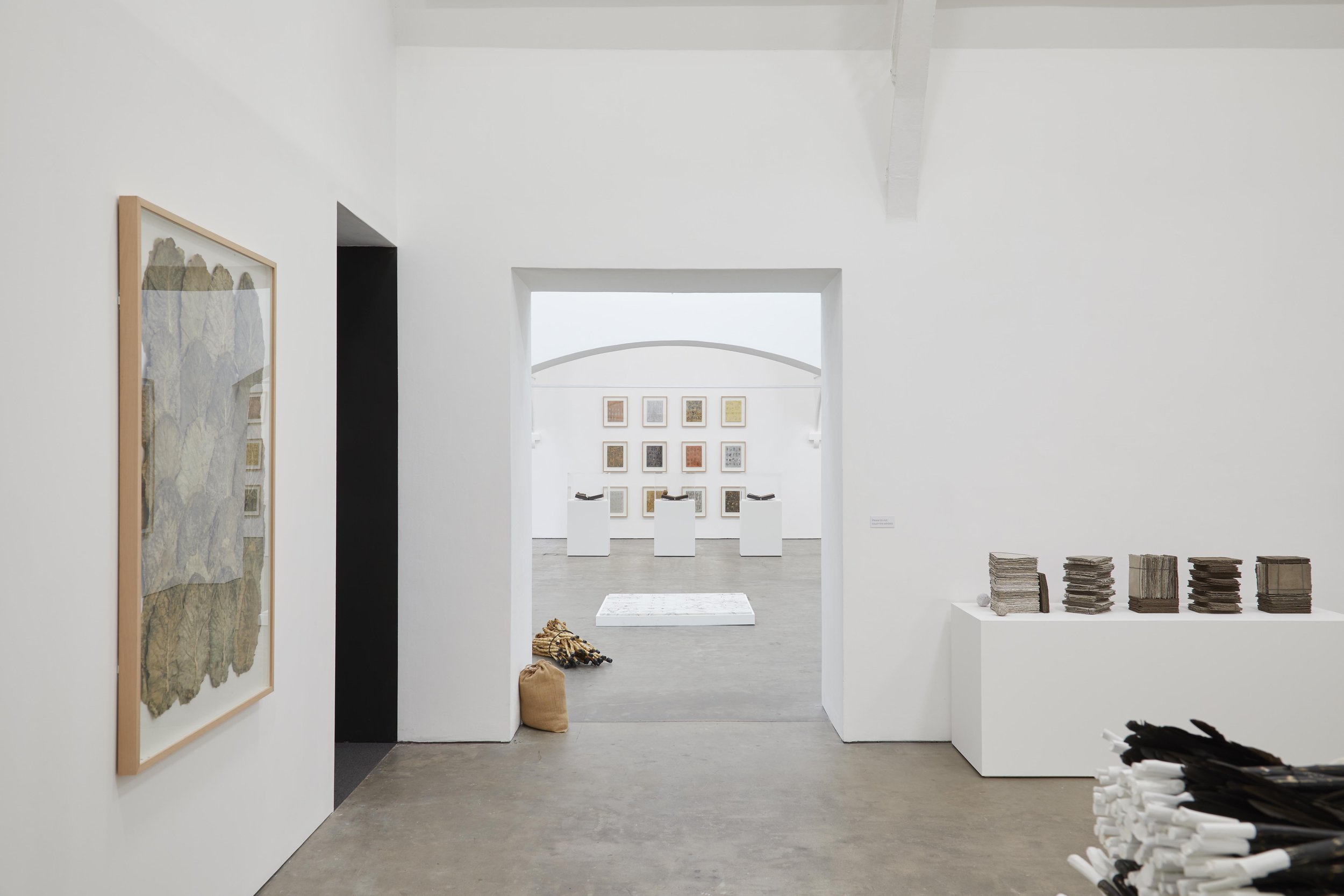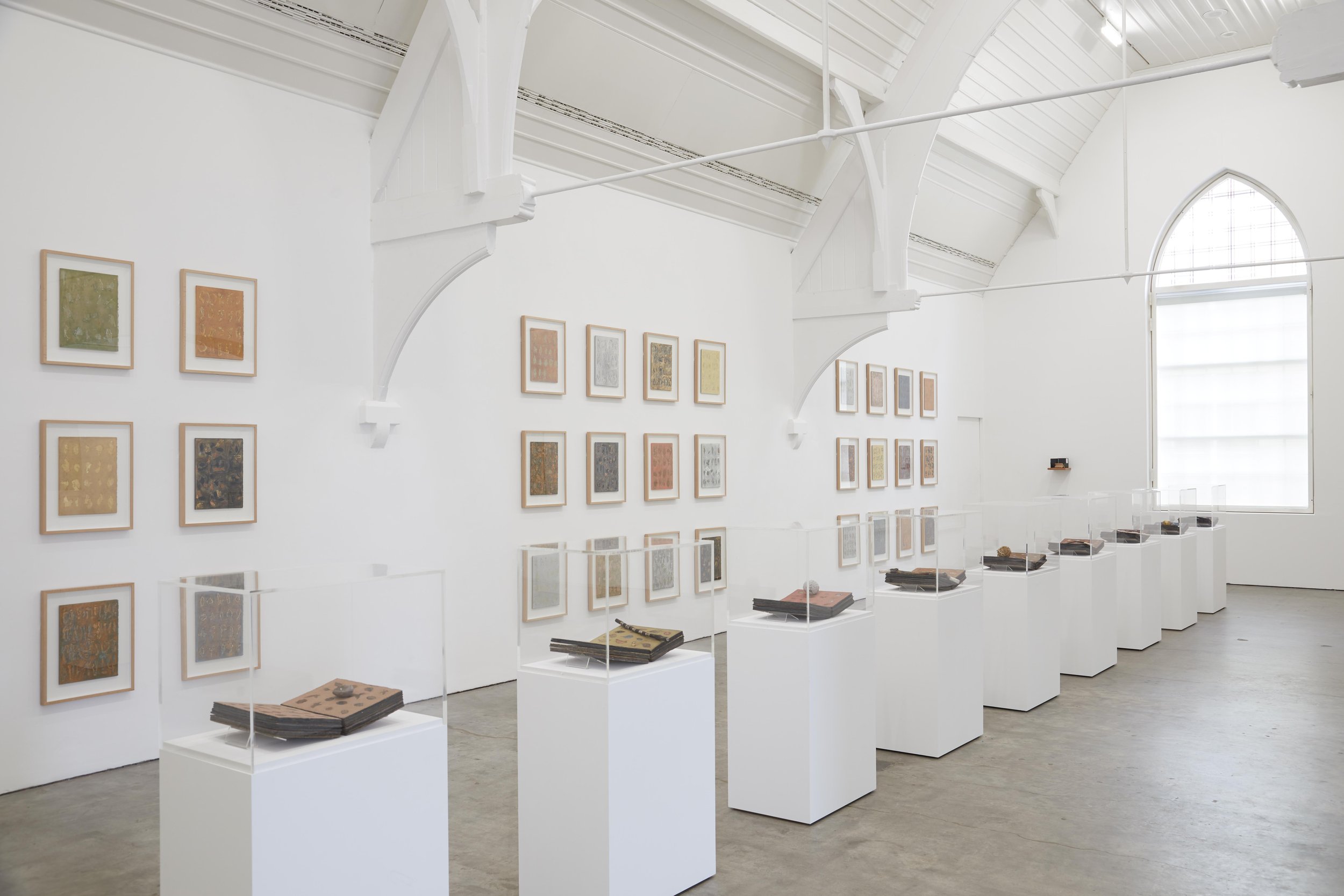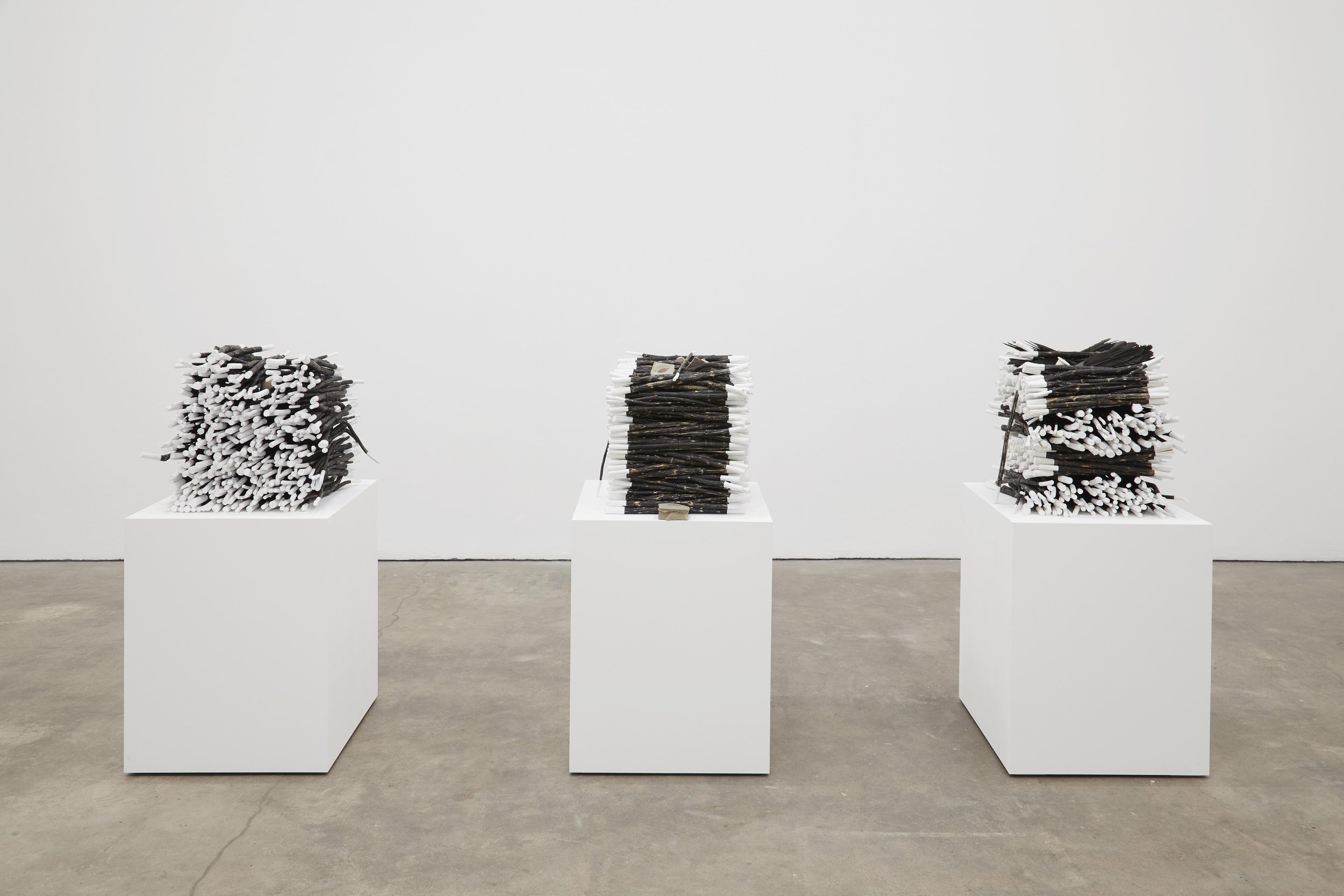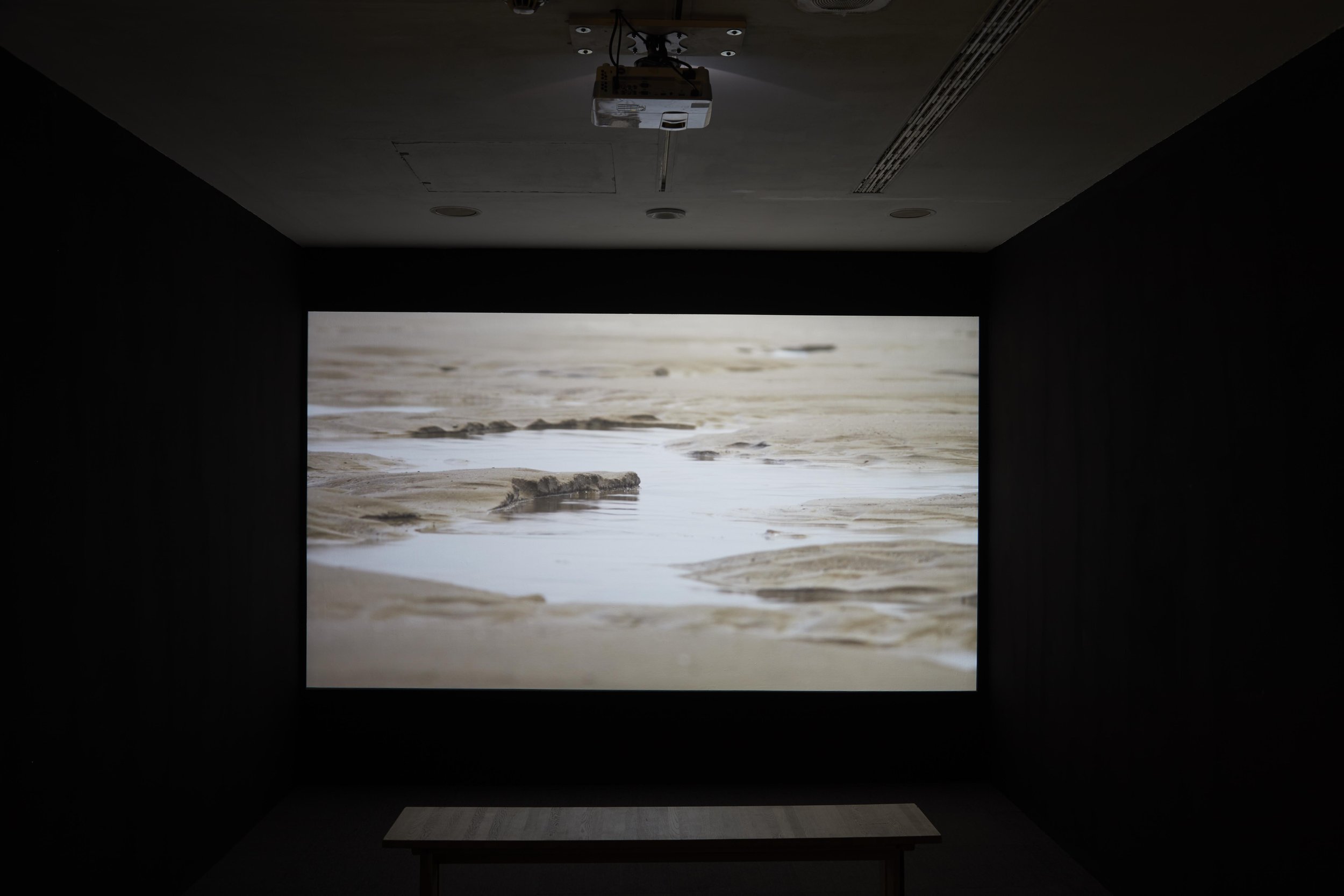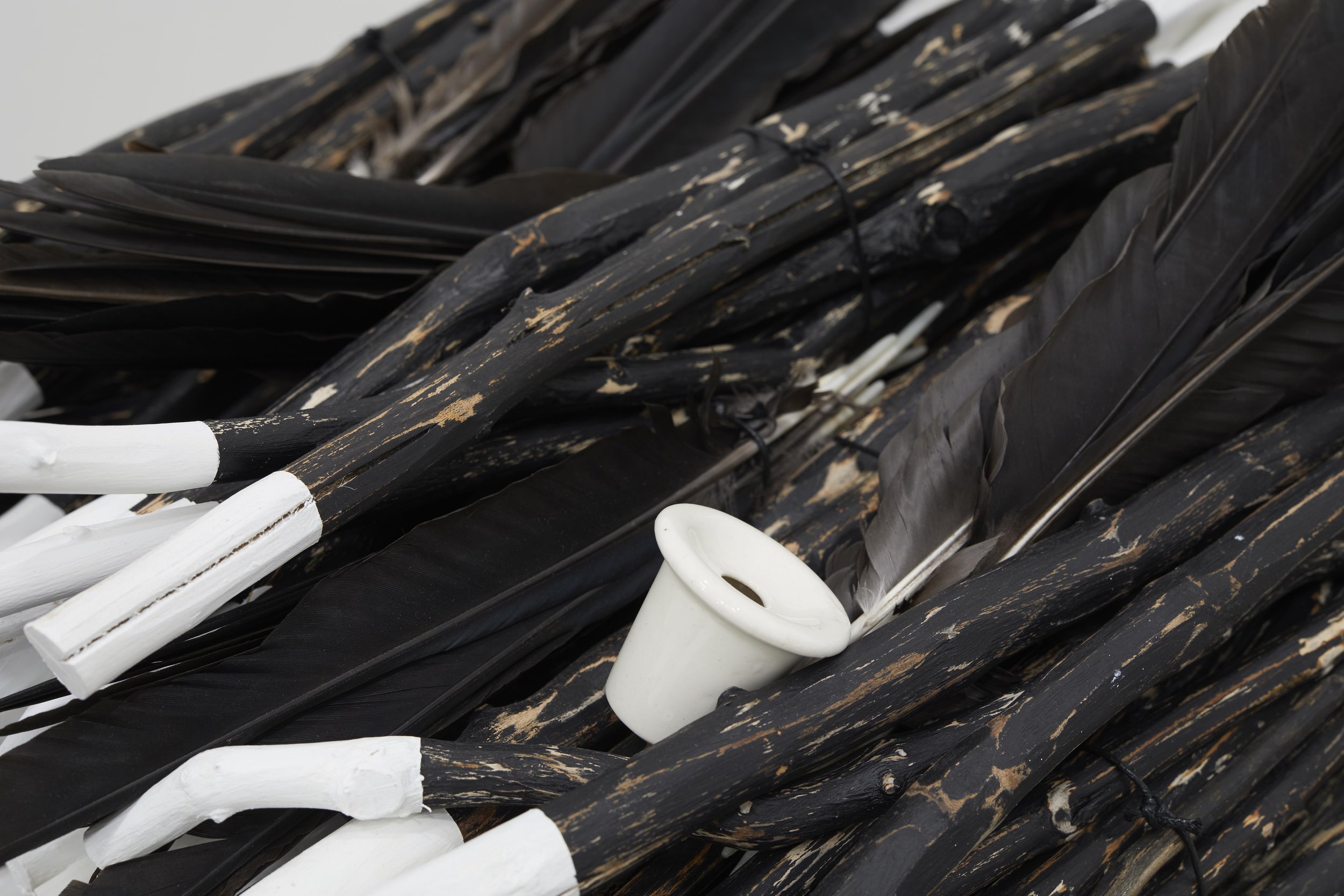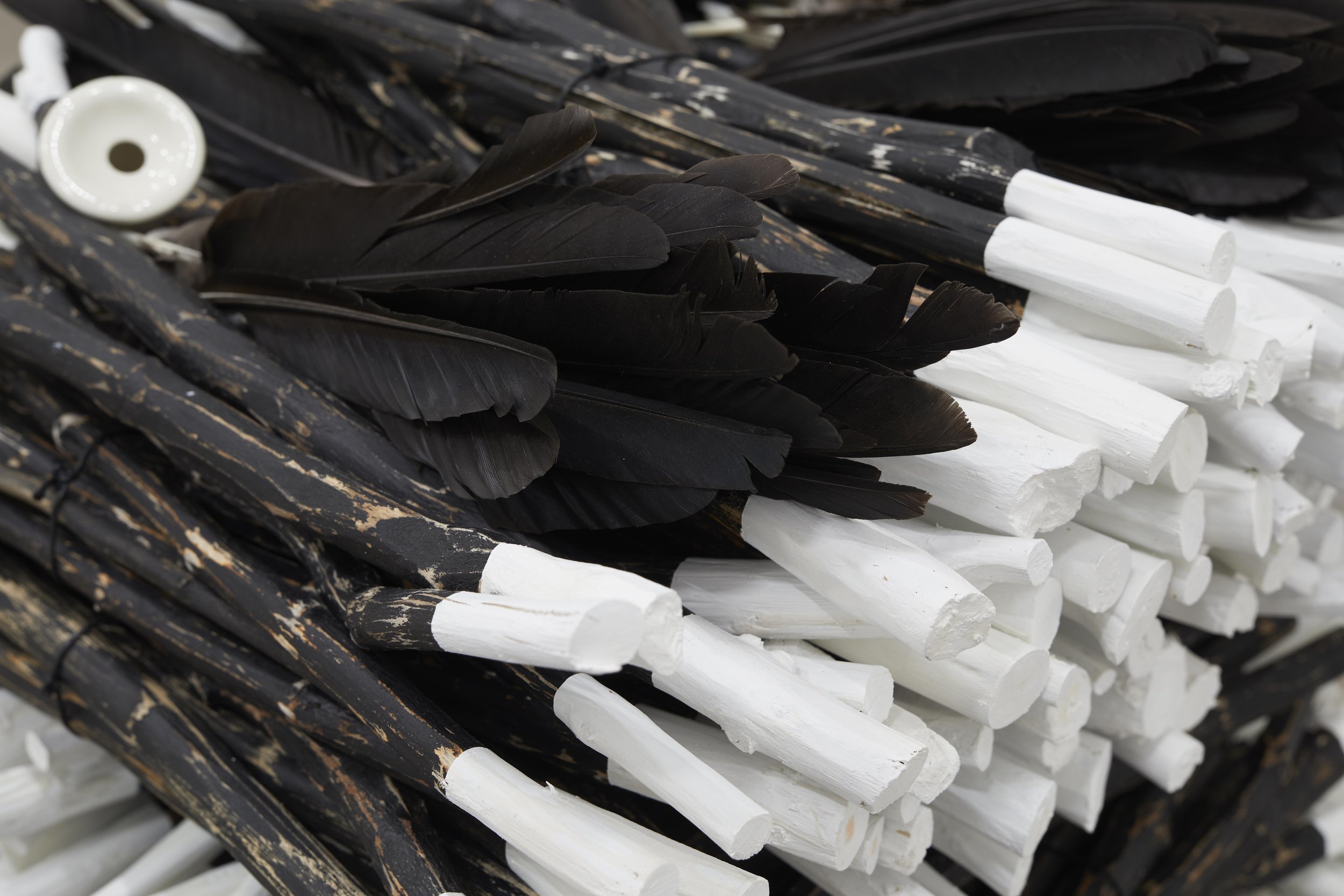Birmingham-born artist John Newling (b. 1952) is a pioneer of public art with a social purpose. This major exhibition exemplifies his strong environmental proposition, whilst pushing at the boundaries of what defines art.
Two paintings, titled Last Islands (2014-15), introduce Newling’s use of plants as form and material in his work. The Moringa Oleifera, also know as the famine tree, is a drought resistant, tropical/subtropical tree, the artist has grown in his Nottingham studio. Impressions of the plant were made by pressing it into a sheet of metallic leaf then overlaying with watercolours of earthy tones, creating a fluid and tactile surface.
For Newling, this work is a kind of cartography or map, “an atlas of relationships, forms and colours that are the ecology of my practice”.
There is a fine line between ecology and economy in Newling’s work that draws equally on free natural resources. 365 days and 50 million year old leaves (2019) is made of sticks collected by the artist on his daily walks. Having dropped from a tree (likely due to a lack of water), the stick has been cut and painted to transform it into a wand. Gathered into piles, the resulting sculptures contain other objects – soil balls, leaf fossils, feather quills, and an ink well - referencing a natural inscription that far predates any written practice.
The natural material underlaying modern literature is revealed in Eliot’s Notebook (2017), a project that involved the shredding of several hundred copies of The Waste Land. Newling added water, vegetable matter, coffee grounds and urine to the paper, which he turned in composting drums in his back garden for several months. A video reveals the process of decomposition and later construction of paper. Consisting of approximately 80% text and 20% vegetable matter, the pages could sustain plant growth if rehydrated.
The title of this exhibition is taken from Newling’s own book, Dear Nature (2018) and
is also the title of Reece Straws video. Every day for eighty-one days Newling wrote a letter to Nature. In the film the letters, that explore our relationship with the natural world, were read aloud. Newling describes them as “part truth and reconciliation, part advocacy of an urgent need, part thoughts for future social ecologies”.
A growing need to protect the environment is referenced in Blanket (2012), a pressing of Jersey Kale leaves arranged in uniform rows. Also known as Brassica Oleracea, the artist grew more than eighty pots of the vegetable in his garden, regularly collecting, drying and bundling the leaves in order for the stalks to grow. A strong and lightweight material, the plant is known as the ‘walking stick cabbage’, it is a cottage industry revisited in the middle gallery. Here Newling demonstrates his closeness to art movements, namely Land art and Arte povera (‘poor art’), whilst reminding us of our continual reliance on, and the enduring support offered by, nature.
Newling’s plea for a closer connection with, and greater understanding of, the natural world is evident in his development of a new alphabet based on leaves he found at Nymans, a National Trust garden in West Sussex. Working with a designer and typographer, the leaves were pressed, photographed and then digitally turned into a unique alphabet, forming the basis of a downloadable font. Visitors are invited to use the alphabet, outlined here in a grid of marble slabs, to decipher the printed letter on the opposite wall.
From my garden (2018) is a metal leaf work. The grid is an important device for Newling, particularly for extracting a language from nature. This work contains a diversity of leaves pressed and traced to create a simple, indexical sign. This language contains the foundation of a newly sensed knowledge - of ‘deep time’ - which is a current preoccupation of the artist’s work.
In the final gallery we enter Newling’s library of Soil Books (2019). These sculptures derive from his everyday experience of walking from his house into his back garden, picking up leaves on the way: “It’s like a ritual, so that every leaf in those books – the language of the books – is from my garden.” The result is book-like stacks of panels of processed soil with the leaves, pressed and gilded, on the surfaces which are, again, stained with watercolour. The order of the books is crucial, indicating seasonal change, conveying the artist’s preoccupation with physical transformation.
The regularity of the books is reflected in Library of Ecological Conservations – Leaves and Me (2017-2019), a series of thirty-six letters written over the course of three years. Newling invites viewers to look closely towards the edge of the works, in which layering becomes evident, displaying “its own archaeology”. Each panel is an experiment and took a varying amount of time to make.
The presence of the clock in the room conveys an awareness of time, as do the adjacent works on paper, Night (2018) and Day (2018). This is linked to the artist’s understanding of the Anthropocene – the current geological age in which human impact is evident. He is determined to grasp “what is it to know that we have affected our environment… you can trace our evolution to a point where we subdued nature, but to our own cost, because we will make ourselves extinct”. Notably, the circle (of the tied flax seedling) recurs, carrying multiple meanings e.g. earth, zero.
The last work in the gallery, Reconciliation Steps (2019), consists of a mirror and rubber stamp on a small shelf. Looking into the mirror you see the text which reads, “We have signed our names in your soil. So sorry”. As you leave the gallery this work continues in the public square outside of the building with a similar apology to the natural world that sits in a tree, titled Letter to the soil ‘So sorry‘ (2019).
Newling’s exhibition extends beyond the gallery space, with further works sited nearby in the trees in Oozells Square, Brindleyplace.
The exhibition is supported by the Ikon Investment Fund.
